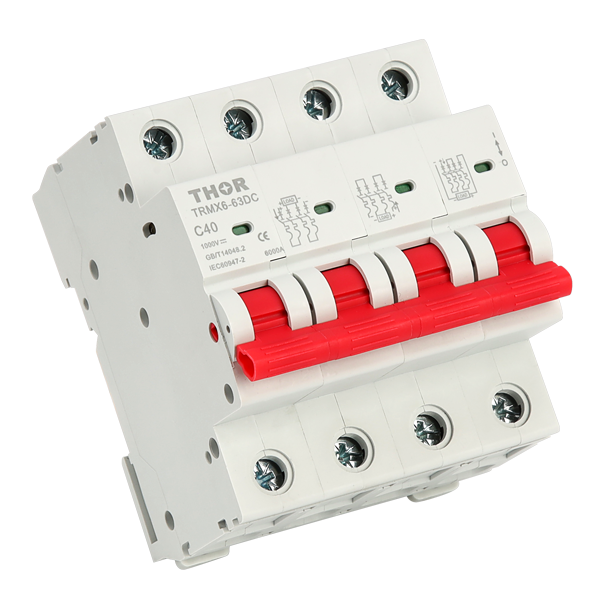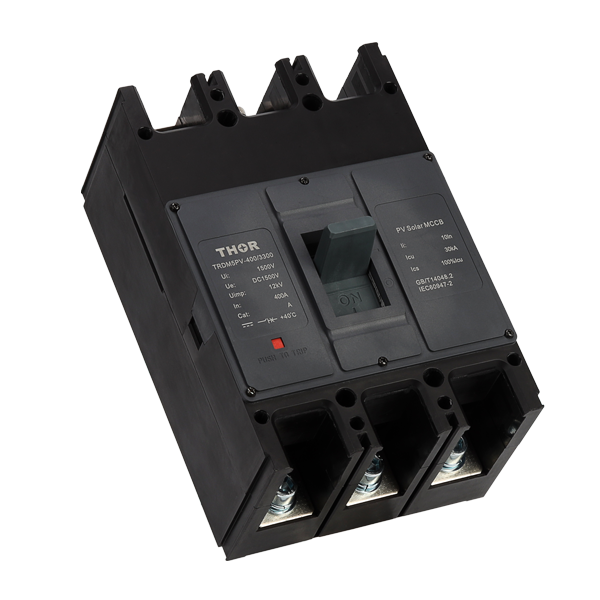Yes, circuit breakers do fail without tripping, and such a problem is even more difficult to identify and more perilous than total failure. Electrical fires are among the top causes of home fires in the United States, and they account for around 46,700 fires, 400 fatalities, 1,400 injuries, and more than $1.4 billion in property damage each year, as stated by the National Fire Protection Association (NFPA).
Working Principle
Circuit breakers are operated by two protection devices: thermal trip and magnetic trip.
Thermal trip is used mainly for overload protection and relies on the thermal expansion properties of a bimetallic strip. When the current is higher than the rated current, the bimetallic strip heats up and bends, pushing the tripping mechanism and tripping the circuit breaker. However, the action of the bimetallic strip is sluggish rather than instantaneous, and therefore it is mostly used for the handling of continuous light or moderate overloads only. For example, a 20A-rated circuit breaker may allow a current of 21A-23A to pass continuously for 30 seconds before tripping.
Magnetic trip is used for short-circuit protection that relies on an electromagnetic coil to sense extremely high short-circuit currents in an extremely short duration and quickly actuate the tripping mechanism, instantly breaking the circuit. The protection system is very fast acting, typically tripping in 5-10 milliseconds. When the electromagnetic coil is faulty due to a short circuit, malfunction, or weak magnetism, it will be unable to exert enough force on the tripping mechanism to close the circuit breaker despite a short circuit.

In addition, the mechanical components of the circuit breaker must be functioning. National Electrical Manufacturers Association (NEMA) did research stating that standard-grade circuit breakers will maintain their performance and remain in operational condition from 6,000 to 10,000 manual operations. Should there be failure of mechanical parts due to jamming, insufficient lubrication, or corrosion, the circuit breaker will not trip even if the current exceeds safety limits.
Possible Causes of Failure
There are many factors by which circuit breakers may fail, the most common of which are arcing contact and oxidation.
Over time, a circuit breaker's internal contacts deteriorate gradually by arcing and ultimately form a carbonized layer. The arc temperature in a 240V AC circuit may reach up to 5,000 to 7,000°C, sufficient enough to melt or damage metal contacts, as stated by an IEEE electrical equipment research report. This increases contact resistance, preventing the circuit breaker from responding quickly to abnormal currents.
Aging of mechanical parts is also a consideration which cannot be avoided. Levers and springs in a circuit breaker must be flexible and elastic in order to function as needed. An IEEE low-voltage switchgear aging test found that at high-temperature and high-humidity environments (85% relative humidity, above 40°C temperature), the aging rate of mechanical parts is 2.5 times faster.
In addition, faulty circuit breakers sold in the market are prone to failure. An 18% failure rate has been reported in low-quality circuit breakers, while 2.5% is the failure rate for conforming brands. This means that almost 1 out of 5 faulty circuit breakers contains a safety flaw.
Impact on Electrical Circuits
The most immediate effect of a faulty circuit breaker is overheating of electric wires. Wires' temperature will constantly increase if they are overloaded perpetually, resulting in insulation weakening or even melting. Based on the UL 746B test of insulation material aging, once the cable temperature increases to 80°C (176°F), insulation lifespan will be cut down by 50%. When the temperature increases further to 100°C (212°F), insulation will fail in just one year.
Another important hazard is equipment damage. A study by the National Electrical Manufacturers Association (NEMA) found that when a motor is operated continuously at 110% of rated current, the consequent increase in heat reduces its life expectancy by 35-40%. Voltage fluctuations in high-precision electronic devices cause circuit board heating, which results in increased failure hazards.
How to Detect Failure
It can be identified whether a circuit breaker has failed through a number of means, such as infrared temperature scanning, load testing, and mechanical inspection.
Infrared temperature measurement is used most commonly. Under normal conditions, the surface temperature of a circuit breaker should be between 30°C and 50°C. According to Fluke infrared thermometer test standards, if the temperature read is above 60°C, it indicates that there may be a possible poor contact or overload issue.

Load testing may be used to test the tripping ability of a circuit breaker. For example, for a 20A-rated circuit breaker, if a current is ramped up to 25A gradually and the breaker does not trip within 60 seconds, its thermal trip mechanism may have malfunctioned.
Prevention Methods
To reduce the likelihood of circuit breaker failure, the following may be attempted:
-
Routine Maintenance: Check circuit breakers every six months, including temperature testing and checks of manual switch operation.
-
Employ High-Quality Circuit Breakers: Choose products that are certified to UL 489, IEC 60947-2, or GB 14048.2 standards to ensure safety and reliability.
-
Good Load Management: According to the National Electrical Code (NEC), the continuous load on a circuit breaker must not exceed 80% of its rated current.
When to Replace a Circuit Breaker
The following circumstances indicate that a circuit breaker has to be replaced:
-
Abnormal Temperature: In case the circuit breaker's surface temperature is over 60°C, there might be an issue with internal contact.
-
Misoperation or Failure to Trip: According to IEEE studies on electrical protection devices, malfunctioning among circuit breakers in their old age increases by 10-15%.
-
Exceeding Service Life: The typical circuit breaker design life is 15-20 years. If the breaker survives this timeframe, it needs to be replaced whether or not there are any visible issues.
A CPSC (U.S. Consumer Product Safety Commission) report showed that 80% of electrical fires involved older or lesser circuit breakers. Replacing older equipment as quickly as possible is therefore important to reducing hazards.
